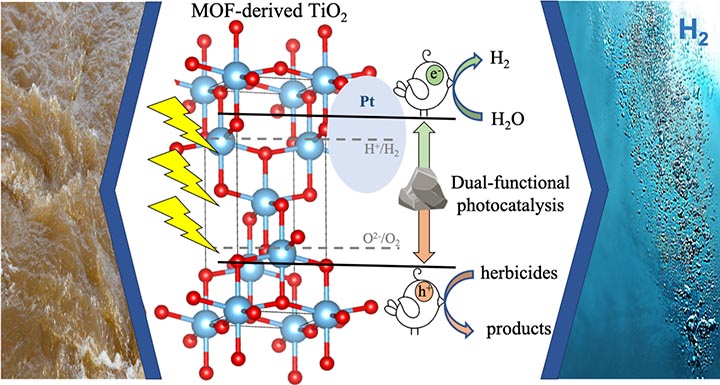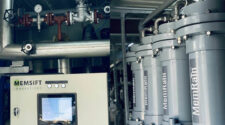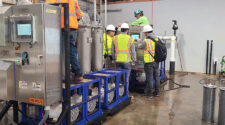Researchers at the Oregon State University College of Science have developed a dual-purpose catalyst that purifies herbicide-tainted water while also producing hydrogen.
The project, which included researchers from the OSU College of Engineering and HP Inc., is important because water pollution is a major global challenge, and hydrogen is a clean, renewable fuel.
“We can combine oxidation and reduction into a single process to achieve an efficient photocatalytic system,” OSU’s Kyriakos Stylianou said. “Oxidation happens via a photodegradation reaction, and reduction through a hydrogen evolution reaction.”
A catalyst is a substance that increases the rate of a chemical reaction without itself undergoing any permanent chemical change. Photocatalysts are materials that absorb light to reach a higher energy level and can use that energy to break down organic contaminants through oxidation. Among photocatalysts’ many applications are self-cleaning coatings for stain- and odor-resistant walls, floors, ceilings and furniture.
Made up of positively charged metal ions surrounded by organic “linker” molecules, MOFs are crystalline, porous materials with tunable structural properties and nanosized pores. They can be designed with a variety of components that determine the MOF’s properties.
Upon MOFs’ calcination – high heating without melting – semiconducting materials like titanium dioxide can be generated. Titanium dioxide is the most commonly used photocatalyst, and it’s found in the minerals anatase, rutile and brookite.
Stylianou and collaborators including Líney Árnadóttir of the OSU College of Engineering and William Stickle of HP discovered that anatase doped with nitrogen and sulfur was the best “two birds, one stone” photocatalyst for simultaneously producing hydrogen and degrading the heavily used herbicide glyphosate.
Glyphosate, also known as N-phosphonomethyl glycine or PMG, has been widely sprayed on agricultural fields over the last 50 years since first appearing on the market under the trade name Roundup, and “only a small percentage of the total amount of PMG applied is taken up by crops, and the rest reaches the environment,” Stylianou said. “That causes concerns regarding the leaching of PMG into soil and groundwater, as well it should – contaminated water can be detrimental to the health of every living thing on the planet. And herbicides leaching into water channels are a primary cause of water pollution.”
Among an array of compounds in which hydrogen is found, water is the most common, and producing hydrogen by splitting water via photocatalysis is cleaner and more sustainable than the conventional method of deriving hydrogen – from natural gas via a carbon-dioxide-producing process known as methane-steam reforming.












